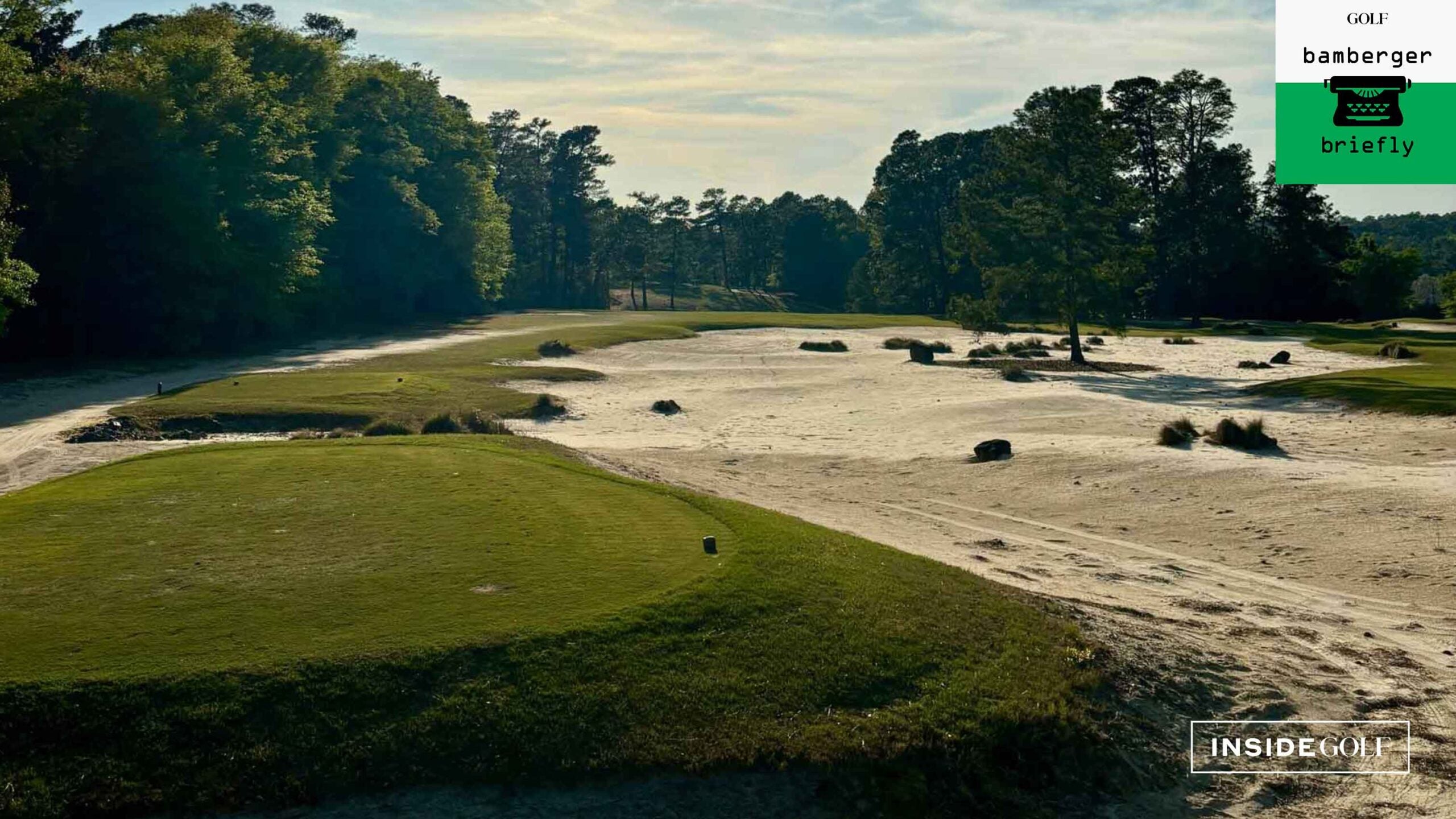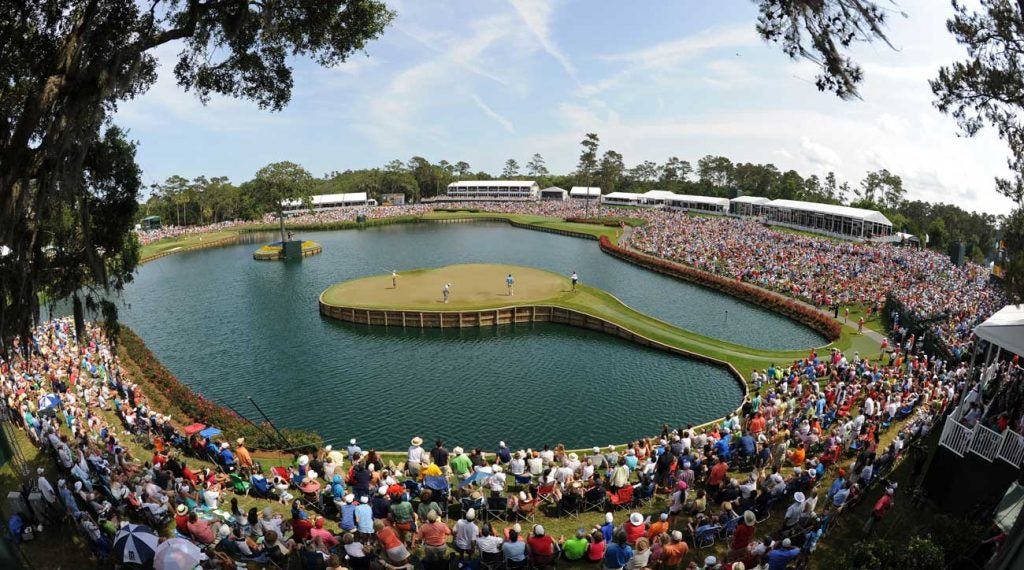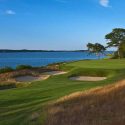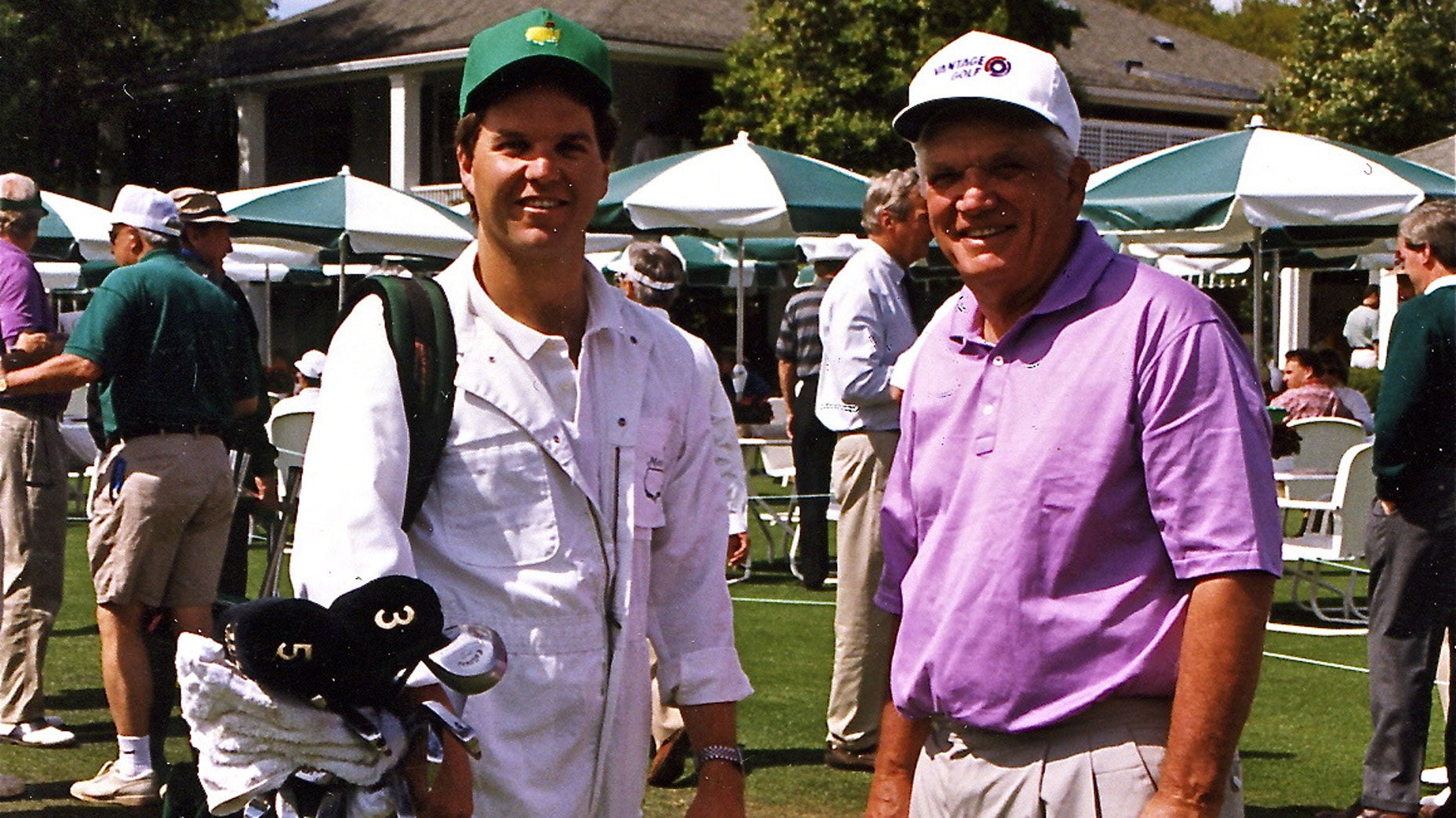 My 7 favorite Augusta-area golf courses, ranked by their accessibility
My 7 favorite Augusta-area golf courses, ranked by their accessibility
Course Rater Confidential: Are island greens gimmicky, and just how difficult are they to build?
GOLF’s Top 100 course panelists are among the most respected and well-traveled course evaluators in the game. They’re also keen to share their opinions. In this GOLF.com series, we’ll unlock their unvarnished views on all questions course-related. The goal is not only to entertain you but also to give you a better understanding of how to understand and appreciate golf course architecture. You can see GOLF’s latest Top 100 Courses in the World ranking here, and meet all of our Top 100 panelists here.
As architects, what are your thoughts on island greens in general (where on the scale of gimmicky-to-great do you place them) and what would be the reasons you would or would not consider including one in one of your designs?
Ian Andrew (Panelist since 2015; has played 72 of the World Top 100): A golf magazine once ran a worst-golfer tournament where they took the four worst “avid” golfers and had them play 18 holes against each other at TPC Sawgrass. Three of them ran out of balls. The exception was the brilliant guy who putted around the 17th hole and across the causeway to preserve his last ball so that he could finish and win. The 17th at TPC Sawgrass may be one of the most memorable holes in golf due to the Players Championship, but it is still one of the worst concepts in golf. I believe Herbert Strong at Ponte Vedra Golf Club built the first and it was a little more accommodating, but Pete’s version has become the ultimate version. As a one-off, the 17th is an iconic hole because of the tournament it serves. It teaches us a lot about nerves, psychology and, finally, shows how a hole can get into a player’s head well before they reach it. The impact would be far less if the hole were the 3rd or 4th.
But the concept is just awful. The shot has no safe play or alternative route. A player can easily find themselves in a position where they can’t finish the hole and potentially the round. That’s architorture. I believe that the recovery shot is a key part of the game. For example, you may miss the Postage Stamp and all its trouble, but with one good shot, you have the potential to undo the previous mistake. That’s a much better version of the game. There is a fine line between extremely difficult and unfair and this concept crosses the line for me. I can feel for those four guys at the TPC. I played in an event with an island green in howling winds a few years back. We needed the best two scores from our foursome. Two finished and we left five balls in the water. After the round, we found out every group had two players who did not complete the hole. Most scores included one ball in the water. How could that concept be fun on a daily basis for the average player? As much as I enjoyed the 17th at TPC when I played there, the thought of playing it every day would make me find a new sport.
David McLay-Kidd (Panelist since 2004; has played 60-plus of the World Top 100): Golfers love hitting over things and through things, be it a bunker, a cliff edge, water or a gap in the sand dunes. It’s a thrill to aim a ball over danger and deliver it safely to the other side. It’s a golf course architect’s job to offer those dangerous opportunities and allow golfers the thrill of the attempt. The ultimate danger is when no opportunity of recovery exists, no room for error, only success or failure! My ethos as a designer is to avoid such definitive tests at nearly all costs, but just occasionally, there’s room for an exception. I have played this hole many times, as Pete Dye and his offspring were often asked by their clients to copy it (this according to Dye design people I’ve spoken with over the years). This hole is now iconic. I’d be honored if a hole I designed were someday considered iconic!

Tom Doak (Panelist since 1985; has played most of the World Top 100): Some of the history here is incorrect — the guy who putted around the walkway in that competition finished with the highest score, as he was the only one who couldn’t hit and hold the green. And the hole was never planned as an island in sand (as what’s said below). It just wasn’t going to be completely surrounded by water, until Mrs. Dye said to keep digging! TPC Sawgrass was built as the headquarters of the PGA Tour and the site of the Players. In that setting, and for those players, an island green is intimidating, but not unfair. For the majority of golfers, it’s a poor concept, and I would always try to make a hole playable for the general public. For example, if the island was only 10 yards out in the lake, instead of 50, most people could drop and finish from the side of it.
Brian Curley (Panelist since 2011; has played 65 of the World Top 100): OK, I’ll be the contrarian, again. I have no problem with the concept when it is done correctly. Over the years we have designed many and built a handful, mostly in Asia (one in Wuhan, by the way). The reality is most golfers love them and they drive the desire to play one course over another. To cite just one example: when it was first announced that our course, Amata Spring outside Bangkok, was going to have not just an island but a floating green serviced by boat, memberships sold out almost immediately. (By the way, the first green sank, but the second, she was sturdy!) It is a great experience to look forward to and a highlight of the round for probably every player.
Sure, they can be terrible. I have seen island greens on sandy sites along the ocean with daily five-club winds — that’s a big bowl of wrong on many levels. I have also seen the horrid combo of a small target and a 50-foot drop shot that sends slightly drifting shots even more offline. But, if the site is relatively wind-free and the drop zone is placed at a reasonable distance, playing to a fat, easy and receptive angle, the playability issue is dealt with. By the way, they make AWESOME 19th holes.
Jim Urbina (Panelist since 2015; has played 69 of the World Top 100): The island green at TPC Sawgrass I believe gets its roots from the Golden Age of design. C.B. Macdonald built the famous short hole at The National Golf Links of America. Pete and Alice’s 17th-hole design is no different except for one major factor — water. Macdonald described the “Short” as one green with three separate pinning locations, and the 6th at The National has three distinct ones: right, center and left. If you miss one you must traverse over a hump to get to another pin location. The 17th at Sawgrass has the same three distinct pinning locations. And to make matters worse, Pete and Alice added a moat of water around their green, while at The National, Macdonald used sand. But as the 20-year-old tag line in all of the PGA commercials says, “These guys are good.” Pete and Alice simply wanted them to prove it.
ADVERTISEMENT
Have you ever built an island green? If so, how do you feel about the result? Any challenges to designing one that the average golfer might not consider?
Andrew: Never. I hate the concept.
McLay-Kidd: I have never built an island green like the 17th at TPC Sawgrass but I have built what Pete originally planned, a par-3 surrounded by sand (Dye himself gives an account of this original plan in his book, Bury Me In a Pot Bunker). At Mammoth Dunes, the par-3 8th hole was inspired by the 17th at TPC Sawgrass or at least the version Pete planned to build before Alice suggested filling the sandy void with water. In my version, there is some chance of recovery. I also created an approach coming into the green from the left to allow the slicers a place to aim as well as ease the technical issues of access and egress.
Doak: I haven’t built an island green yet, and I’m not likely to start, unless someone gives me a site with an island that looks like a great green site. However, at Memorial Park in Houston, we’ve built a par-5 hole with water that has to be carried to get to the green — and along both sides — so if you’re going for it in two you can’t hedge to a safe side. I had Brooks Koepka consulting on the design there, and we both agreed the hole would be more telling that way, because even the pros will hedge to the bail-out side if you give them one. Without a bail-out, we will find out which of them are most confident.
Curley: Yep, and always at the client’s request as I really would prefer not to do them. I think all have turned out fine and accomplished the desire to create something different for the players. I think we have done about six that got built but at least two of those have been demolished/canceled in the China quest to curtail golf courses (that’s another story).
Urbina: I only built one island green surrounded by water; it was for Pete Dye in Japan at Seizanzo Country Club. I don’t find the concept of an island green to be fun when you miss the shot, especially when conditions such as wind and rain are present — this would make for a long day. If speed of play is important to you then this particular design would not be very conducive to a four-hour round. Everyone is going to reload and try again. I did. The island green at Sawgrass, although exciting, is not much fun when you miss the green. So no, I would not build an island green.

When most of us think island greens, we picture a par-3 late in the round. Does an island green ever make sense earlier in a routing? And what about an island green on a par-4 or par-5? Any factors key to making them work, or not?
Andrew: No. It has to be late to have the full psychological impact it presents at the Players. You can always make up strokes later and you no longer have to think about it after you’re done. But if the hole is ahead, you will anticipate the shot all round. Or dwell on it, depending on how you are playing.
McLay-Kidd: Placing a do-or-die hole late in the round can be a card-wrecker, but for a Scotsman like me where most golf is match play and strokes matter only when you play one more than your opponent, a do-or-die hole is less worrisome on the card, as there isn’t one! An island green on a par-4 (or worse yet, a par-5) would be something I’d be unlikely to do. It’s hard enough to hit a teed-up wedge off a perfectly flat tee, never mind trying to play to an island from a sidehill lie in the semi-rough with a mid-iron! But I never say never!
Doak: The 10th hole at The Belfry is effectively an island green for a drivable par-4, and at that point in the round it was a huge momentum-changer for the Ryder Cup, at match play. In stroke play, I agree with Ian — the later it is in the round, the more it will weigh on your mind.
Curley: I would always push for late in the round whenever possible, but in Asia, they often start you on the 10th hole, making it a front-nine encounter. But ALWAYS build massive tees as they get chewed up fast. Not sure I have ever designed, let alone built a par-4 with one, as that really is a punisher for average players. The 13th at Valhalla would be a rare example of a par-4 that works for most players, despite a rather perched green. There is plenty of merit for a par-5 but these are rarely island greens and, instead, island-green sites with some bailout for obvious reasons. An example would be the 18th at the Mission Hills Dinah Shore course where the LPGA plays in April. Not that I consider it a good hole, just saying.
Urbina: I would make it the last hole of the tournament at TPC Sawgrass. If you are going to challenge the best players and then reward them with the title of Players champion, why not make the 18th hole look like a stadium with fans on both sides of the island?
To receive GOLF’s all-new newsletters, subscribe for free here.
ADVERTISEMENT






